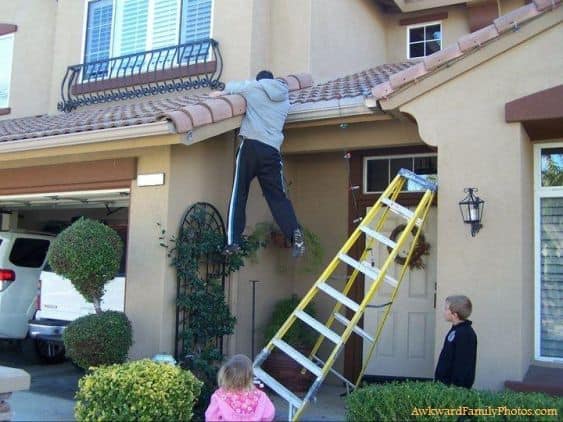Safety tips for home DIY projects
 ‘Doing it yourself’ gives you a great sense of achievement and pride and can also save you a bundle. However, to get the most out of your DIY projects, make sure you plan ahead and use the right safety gear. Don’t let an accident and injury get in the way of your masterpiece, lead to big medical bills and potentially, time off work. Here are some safety tips to help you out:
‘Doing it yourself’ gives you a great sense of achievement and pride and can also save you a bundle. However, to get the most out of your DIY projects, make sure you plan ahead and use the right safety gear. Don’t let an accident and injury get in the way of your masterpiece, lead to big medical bills and potentially, time off work. Here are some safety tips to help you out:
Working at heights
There’s nothing quite like sitting back on your newly built deck having a beer and admiring your workmanship. But don’t let that first drink be from a wheelchair with a broken leg! When building a deck, one of the most common injuries is from falls. For most of the build there are no floor boards or hand railing, so the chances of failing are quite high. So before you start up the drop saw and pick up the nail gun you should speak to an expert about how to make sure you are safe while working at heights. The guys from Safe@Heights can certainly help you out. They can recommend the right safety harness and rope for you. They can even help with ladder safety with tips on how not to end up at the bottom when you wanted to be at the top.
Dial before you dig
Digging is one of those things, you pick up the shovel and before you know it, you’ve excavated half of your front yard! My wife always jokes that when I pick up a crowbar, mattock or shovel, it triggers some primal “man urge” in me and that I can’t help but dig halfway to China. She might very well be right. If you need to dig at your place, no matter how big or small the hole needs to be, make sure you find out first, what utilities are in the ground. Jump on to your energy and water supplier’s websites for the location of any underground pipes in and around your home.
Know your power tools
The guys on the renovation shows make it look so easy, just pick up your circular saw, angle-grinder or jigsaw and get to it. But the reality is, these guys are qualified tradies and have a bunch of people behind the scenes helping them. Power tools are undoubtedly very helpful and if used correctly, can dramatically reduce the time and effort you’ll need to complete your DIY projects. However, just like working at heights, unless you know what you’re doing, the risks can far outweigh the benefits. Check out your local TAFE or Bunnings to see if they run short DIY courses that will teach you how to use a range of power tools safely. As a homeowner, repairs and renovations are largely unavoidable. If you can afford to outsource and call in the experts, that’s great. However, more and more of us are doing DIY projects either to get ahead on the mortgage or simply for the satisfaction of doing the work ourselves. Before you start work though, map out exactly what you’ll need including tools, parts and safety equipment. Make sure you get some advice if you need it and remember, there’s no shame in asking for help and guidance, particularly when it comes to your safety.


